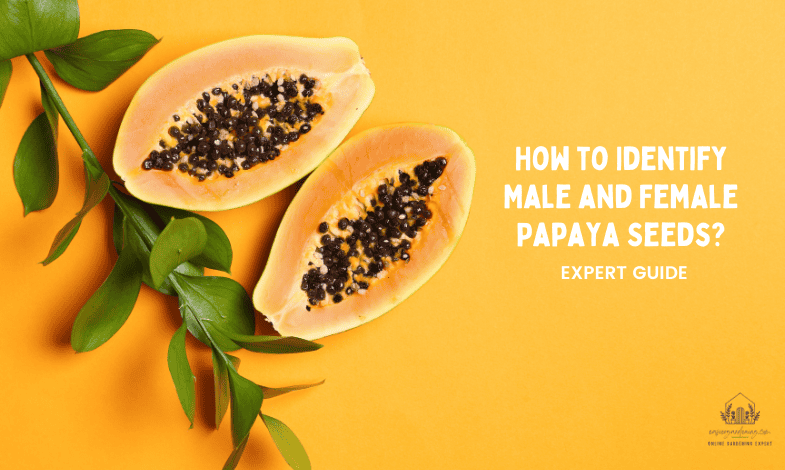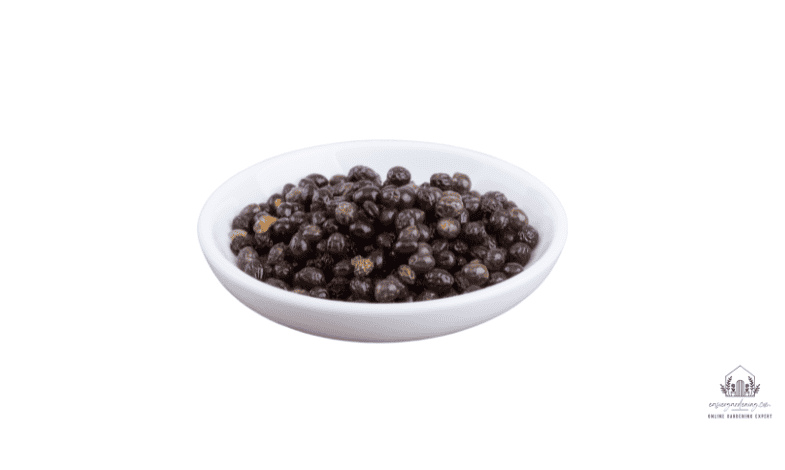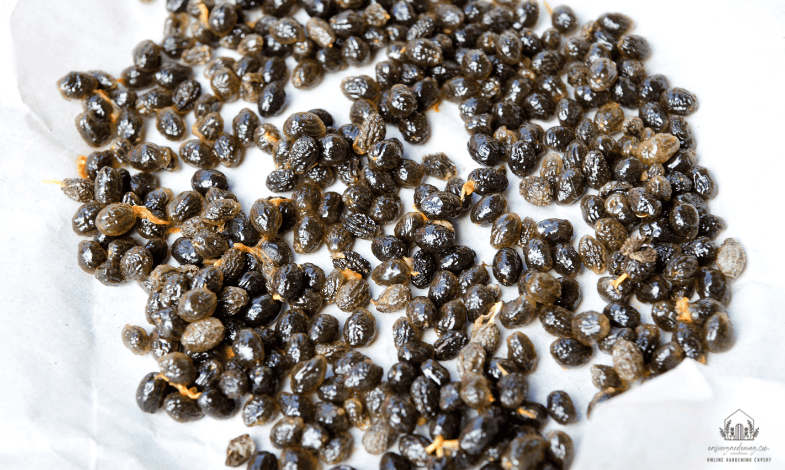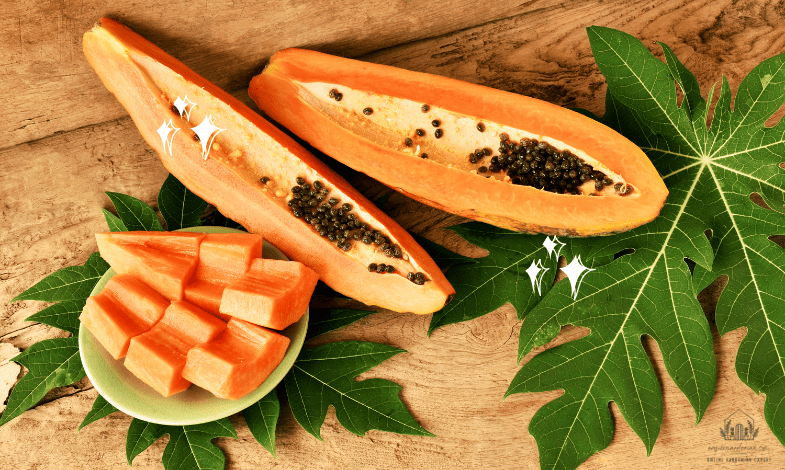Have you ever tried to grow papayas only to end up with a fruitless wonder? You’re not alone! The secret to papaya success often lies in those tiny seeds and boy, do they have a story to tell. Can papaya plants be male, female, or even hermaphrodite? It’s true! A study by the University of Hawaii found that about 66% of papaya seeds from a typical fruit will produce female plants, 33% hermaphrodites, and only 1% males. Talk about playing the genetic lottery! But fear not, green thumbs and curious cultivators. I’m here to spill the beans (or should I say seeds?) on how to crack the code of papaya seed gender. Get ready to become a papaya seed detective – no magnifying glass is required!
Contents
- Getting to Know Papaya Sex Types
- Spotting Male, Female, and Hermaphrodite Papayas
- Why Hermaphrodite Papayas Are Awesome
- How to Tell If Your Papaya Seeds Are Male or Female
- The Float or Sink Test
- Checking Seed Color
- Watching How They Grow
- Advanced Techniques for Sex Determination
- Molecular Marker Analysis
- Near Infrared Spectroscopy for Sex Identification
- Hormone-Related Genes and Sex Differentiation
- Handy Tips for Home Gardeners
- Papaya Seed Water Test
- Watching Growth Patterns
- Checking Root Shapes
- How Sex Types Affect Papaya Production
- Pollination and Fruit Development
- Economic Impact of Sex Types
- Hurdles in Traditional Farming
- Metabolic Differences in Papaya Plants
- Testosterone and Norgestrel Levels
- Plant Hormones and Growth
- Medicinal Value of Different Metabolites
- Microbial Community Differences in Papaya Plants
- Nitrogen-Fixing Bacteria in Male Papayas
- Organic Matter Utilization in Female Papayas
- Fungi Abundance in Male and Female Papayas
- Conclusion
Getting to Know Papaya Sex Types
Papaya plants, famous for their tasty fruit, come in three types: male, female, and hermaphrodite. Knowing these differences is key for gardeners who want to get the most fruit from their plants.
Spotting Male, Female, and Hermaphrodite Papayas
Papaya trees can have male, female, and hermaphrodite flowers. Male flowers are mainly for pollination and rarely produce fruit. Even when they do, the fruits aren’t usually worth much. Female flowers need pollen from male flowers to make fruit. Hermaphrodite flowers have male and female parts, so they can pollinate and make fruit independently.
| Sex Type | Flower Characteristics | Fruit Production |
|---|---|---|
| Male | Staminate (male) flowers | Rarely produce fruit |
| Female | Pistillate (female) flowers | Needs pollen from male flowers |
| Hermaphrodite | Bisexual flowers (both male and female parts) | Self-pollinating produces fruit |
Why Hermaphrodite Papayas Are Awesome
Hermaphrodite papaya plants are a gardener’s best friend, especially for those growing papayas commercially. These plants are popular because they produce long, market-friendly fruit (ScienceDirect).
Hermaphrodite plants have some fantastic perks:
- Self-pollination: They don’t need bees or other pollinators to make fruit (Bee Aware).
- Reliable fruit production: They consistently produce fruit, making them a safe bet for gardeners.
- Market appeal: The fruit from hermaphrodite plants is usually more uniform and meets market standards better than fruit from female plants.
Knowing the sex types of papaya plants is a game-changer for successful gardening. By understanding the differences between male, female, and hermaphrodite plants, gardeners can boost fruit production and satisfy market demands. For more handy gardening tips, check out our articles on how to grow lemon grass from seed and how long does it take a mango seed to sprout.
How to Tell If Your Papaya Seeds Are Male or Female
Figuring out if your papaya seeds are male or female can be a bit of a puzzle, but don’t worry—you can use a few tricks to crack the code. Let’s dive into some easy methods that home gardeners swear by.
The Float or Sink Test
The float or sink test is one of the easiest ways to tell if your papaya seeds are male or female. Just toss your seeds into a bowl of water. Male seeds usually float, while female seeds sink. It’s a quick and simple way to sort them out before you plant.
| Seed Type | Behavior in Water |
|---|---|
| Male Seeds | Float |
| Female Seeds | Sink |
This method is super handy if you want to ensure that you’re planting female seeds, which will produce fruit.
Checking Seed Color
Another trick is to look at the color of the seeds. Black seeds are usually male and won’t produce fruit. On the other hand, seeds that aren’t black are more likely to be female.
| Seed Color | Likely Sex Type |
|---|---|
| Black | Male |
| Non-Black | Female |
Watching How They Grow
If you’re patient, you can plant and watch the seeds grow. Male seeds grow tall and lanky, while female seeds grow slower and sturdier.
| Growth Pattern | Likely Sex Type |
|---|---|
| Lanky Growth | Male |
| Slow and Sturdy Growth | Female |
Watching your plants develop allows you to determine which ones are female and ensure you’re growing the type you want.
For more gardening tips and tricks, check out our articles on growing mandarin orange seeds and lemon grass from seed. Happy gardening!
Advanced Techniques for Sex Determination
Some nifty techniques can make the job much more manageable when figuring out whether your papaya seeds will grow into male or female plants. Let’s dive into three main methods: Molecular Marker Analysis, Near Infrared Spectroscopy, and checking out Hormone-Related Genes.
Molecular Marker Analysis
Think of molecular markers as DNA fingerprints that help identify the sex of papaya plants early on. One of the best markers is W11, which can pinpoint male and hermaphrodite plants with 100% accuracy. Other markers like PMSM, pH, and Cpsm31 haven’t been as reliable.
Using these markers means you don’t have to wait for the plants to flower to know their sex. This can save you time and effort if you’re growing papayas for their fruit.
Are you curious about how molecular markers can help in other gardening tasks? Check out our article on how to grow perennial flowers from seeds.
Near Infrared Spectroscopy for Sex Identification
Near Infrared Spectroscopy (NIR) is a fancy way to figure out the sex of papaya trees without harming them. You can use this method on both seeds and leaves. By using Principal Component Analysis (PCA) and Quadratic Discriminant Analysis (QDA), researchers got an F-score of 0.81 for seeds and 0.79 for leaves with PCA and Linear Discriminant Analysis (LDA).
| Method | Sample Type | F-score |
|---|---|---|
| PCA-QDA | Papaya Seeds | 0.81 |
| PCA-LDA | Papaya Leaves | 0.79 |
NIR is a non-invasive way to identify the sex of your plants, making it an excellent tool for home gardeners who want to get the most out of their papaya crops.
For more non-invasive gardening tips, check out our guide on how to grow lemongrass from seed.
Hormone-Related Genes and Sex Differentiation
Recent studies show that hormone-related genes, alongside sex chromosomes, are critical players in determining the sex of papaya plants (ScienceDirect). These genes control the hormonal balance that decides whether a plant will be male or female.
Understanding these genes can give you a leg up in manipulating plant sex for better fruit production.
Want to know more about how hormones affect other plants? Check out our article on how to get seeds from echinacea.
Using these advanced techniques, you can better identify male and female papaya seeds, making your gardening efforts more efficient and fruitful.
Handy Tips for Home Gardeners
Figuring out which papaya seeds are male or female can be tricky, but don’t worry- we’ve got some easy tricks to help you out. Let’s explore three simple methods: the water test, watching how they grow, and checking out their roots.
Papaya Seed Water Test
The water test is one of the easiest ways to differentiate male and female papaya seeds. Just toss the seeds into a bowl of water and see what happens. Usually, the male seeds will float, and the female seeds will sink. It’s like magic, but it’s just about density differences.
| Seed Type | Behavior in Water |
|---|---|
| Male Seeds | Float |
| Female Seeds | Sink |
This trick is super simple and quick, perfect for sorting your seeds before you plant them.
Watching Growth Patterns
Another way to figure out the sex of your papaya plants is by watching how they grow. After you plant the seeds, keep an eye on them. Male papaya plants usually grow tall and skinny, while female plants grow slower and sturdier.
| Growth Pattern | Plant Sex |
|---|---|
| Tall and Skinny | Male |
| Slow and Sturdy | Female |
Paying attention to these growth patterns allows you to tell which plants are male and female without waiting for them to flower.
Checking Root Shapes
You can also look at the roots to guess the sex of your papaya plants. Male plants usually have one straight root, while female plants have branched roots with two or more offshoots.
| Root Shape | Plant Sex |
|---|---|
| Straight Root | Male |
| Branched Roots | Female |
While this method isn’t foolproof, it can give you a good idea early on. Remember, it’s not 100% accurate, and more research is needed to make it more reliable.
Using these handy tips, you can quickly determine which papaya seeds are male and female in your home garden. For more gardening tips, check out our articles on growing mandarin orange seeds and growing perennial flowers from seeds.
How Sex Types Affect Papaya Production
Pollination and Fruit Development
Knowing the different sex types of papaya plants is key to getting good fruit. Papaya trees can have male, female, or hermaphrodite flowers. For fruit to grow, pollen must move from the male flowers to the female ones (Bee Aware). Hermaphrodite plants, which have both male and female parts, are often the go-to choice because they can self-pollinate and produce the long fruits that people love (ScienceDirect).
Fruits with fewer than 300 seeds usually don’t sell since fruit size is tied to the number of seeds. So, good pollination is necessary for growing papayas that can be sold.
Economic Impact of Sex Types
Papaya farming can be a big money-maker. Take Australia, for example. In the 2005–06 season, papaya production was worth about $20 million, mainly from North Queensland (Bee Aware). Cyclone Larry hit in March 2006, and production took a nosedive, but farmers in the Atherton Tableland area bounced back quickly.
Today, Australia cranks out around 1.3 million cartons of papayas each year, worth about $25 million. Big farms run the show, with only 17 businesses allowed to ship papayas across state lines. Smaller farms and backyard growers sell their papayas at roadside stands across northern Australia (Bee Aware).
Hurdles in Traditional Farming
Traditional papaya farming has its headaches. Figuring out and managing the different sex types—male, female, and hermaphrodite—takes a lot of work. Male plants rarely produce fruits that can be sold, so it’s essential to focus on hermaphrodite and female plants for better yields.
Another issue is ensuring smooth pollination. Since the size and marketability of the fruit depend on the number of seeds, getting pollination right is crucial. Plus, bad weather can really mess up production, as seen after Cyclone Larry.
Knowing the sex types of papaya plants and how they affect production can help you make smarter choices in your garden. For more tips on growing different plants and boosting your yield, check out our articles on how to grow perennial flowers from seeds and how long it takes for wildflowers to grow.
Metabolic Differences in Papaya Plants
Have you ever wondered why your papaya plants behave differently? Knowing the metabolic quirks between male and female papaya plants can make a difference for gardeners keen on identifying male and female papaya seeds. These differences can impact growth, health perks, and even how much fruit you get.
Testosterone and Norgestrel Levels
Male papaya roots are like little testosterone factories, pumping out way more of the hormone than their female counterparts. On the flip side, female papaya roots are loaded with norgestrel. This hormonal tug-of-war might be nature’s way of balancing things and deciding who’s in the papaya world.
| Plant Type | Testosterone Levels | Norgestrel Levels |
|---|---|---|
| Male Papaya Roots | High | Low |
| Female Papaya Roots | Low | High |
Plant Hormones and Growth
Papaya plants rely on a cocktail of hormones to grow and fend off threats. Key players include brassinosteroids (BRs), jasmonic acids (JAs), salicylic acids (SAs), and gibberellins (GAs). These hormones hang out in the roots and nearby soil of dioecious papaya.
- BRs (Brassinosteroids): Help cells stretch and multiply.
- JAs (Jasmonic Acids): Kick in during stress and defense.
- SAs (Salicylic Acids): Boost resistance against pathogens.
- GAs (Gibberellins): Manage growth, from stem length to seed sprouting.
Medicinal Value of Different Metabolites
Some metabolites found in male and female papaya plants pack a medicinal punch. Think of ecliptasaponin A, crocin, berberine, and sapindoside A as nature’s little helpers.
| Metabolite | Medicinal Value |
|---|---|
| Ecliptasaponin A | Fights inflammation |
| Crocin | Antioxidant and brain protector |
| Berberine | Battles microbes and diabetes |
| Sapindoside A | Anti-cancer and immune booster |
Grasping these metabolic differences can help you appreciate the unique traits of male and female papaya plants. For more hands-on gardening tips, check out our guides on growing lemon grass from seed and saving banana pepper seeds.
Microbial Community Differences in Papaya Plants
Have you ever wondered why male and female papaya plants grow differently? It’s all about their tiny microbial buddies. Let’s break down how nitrogen-fixing bacteria, organic matter munchers, and fungi play their parts in these plants.
Nitrogen-Fixing Bacteria in Male Papayas
Male papaya plants are like the cool kids in the nitrogen club. They have more nitrogen-fixing bacteria hanging out in their roots and soil. These bacteria turn atmospheric nitrogen into a form the plants can use, boosting male papayas’ growth. A study from NCBI shows that male papaya roots are packed with these helpful bacteria, making them nutrient powerhouses.
| Plant Type | Nitrogen-Fixing Bacteria Presence |
|---|---|
| Male Papaya | High |
| Female Papaya | Low |
Organic Matter Utilization in Female Papayas
Female papaya plants have their own superpower. They’re great at breaking down organic matter in the soil, which means they can absorb nutrients more efficiently and keep the soil healthy. According to NCBI, female papaya roots are teeming with bacteria that excel at decomposing organic matter, providing essential nutrients for the plant.
| Plant Type | Organic Matter Utilization |
|---|---|
| Male Papaya | Low |
| Female Papaya | High |
Fungi Abundance in Male and Female Papayas
Now, let’s talk fungi. The types of fungi hanging out in male and female papaya roots are quite different. Female papayas have more fungi like Candida, Solicoccozyma, and Rhodotorula. Meanwhile, male papayas are home to fungi such as Gibellulopsis and Curvularia.
| Fungi Genus | Enriched in Male Plants | Enriched in Female Plants |
|---|---|---|
| Candida | No | Yes |
| Solicoccozyma | No | Yes |
| Rhodotorula | No | Yes |
| Gibellulopsis | Yes | No |
| Curvularia | Yes | No |
These microbial differences are crucial for papaya plants’ growth and health. Want more gardening tips? Check out our guides on growing perennial flowers from seeds and winterizing perennial flowers.
Conclusion
And there you have it, your crash course in papaya seed gender identification! With these expert tips, you can play papaya matchmaker like a pro. Remember, while these techniques can give you a good idea of what you’re working with, Mother Nature always has a few tricks up her sleeve.
So, embrace the uncertainty and enjoy the journey of discovery as your papaya plants grow. Whether you end up with a lady papaya, a gentleman papaya, or a best-of-both-worlds hermaphrodite, you’re now equipped to give your plants the best shot at a fruitful future. So plant those seeds, and may your garden be filled with delicious, juicy papayas. Happy growing, and remember – in the world of papayas, it takes all kinds to make a tasty fruit salad!




